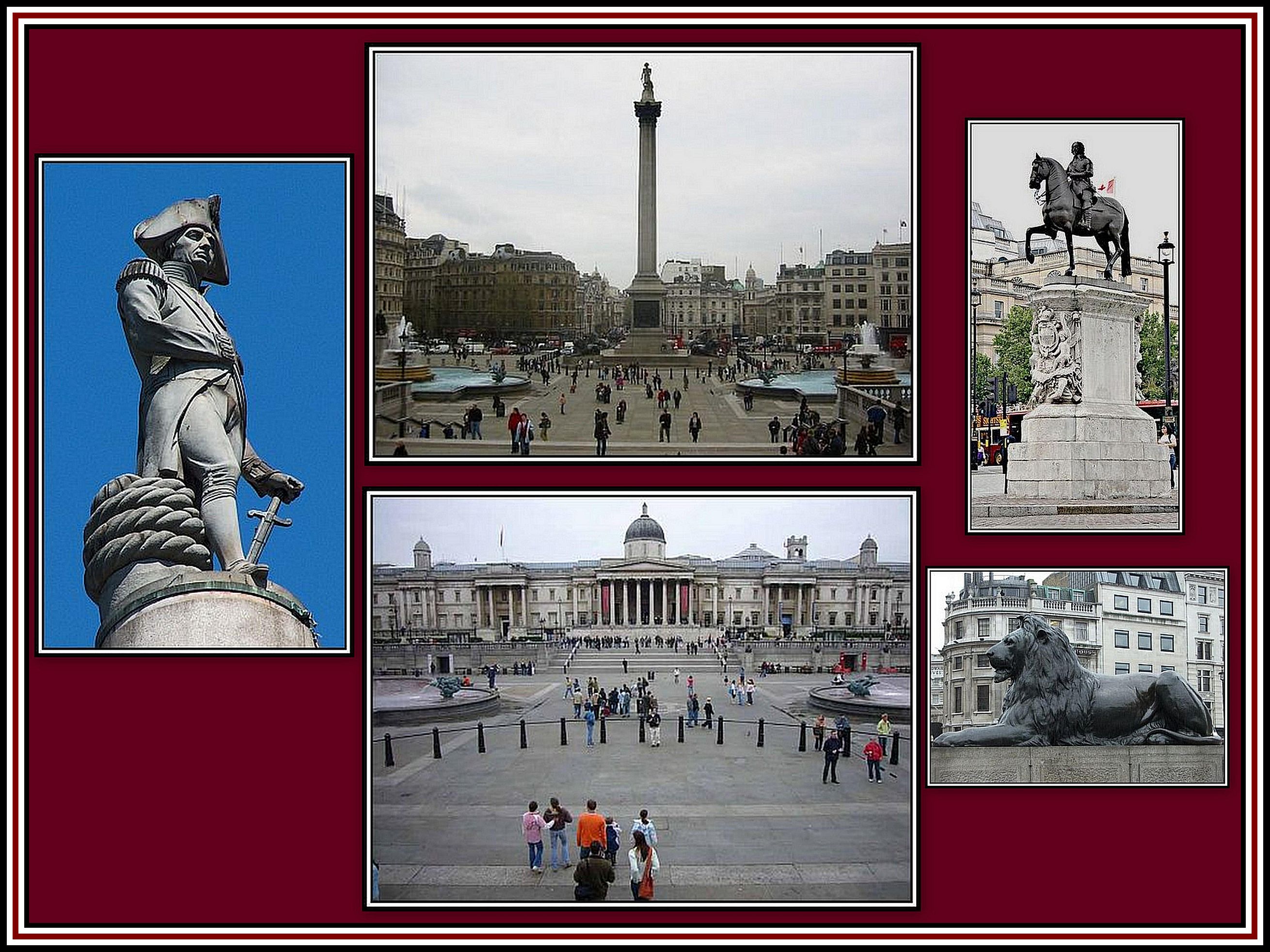POSTCARDS FROM OLD LONDON
PAGE ONE: ADDITIONAL POSTCARDS OF
TRAFALGAR SQUARE
by
DAVE HILL & CHARLES S.P. JENKINS
-oOo-
-oOo-
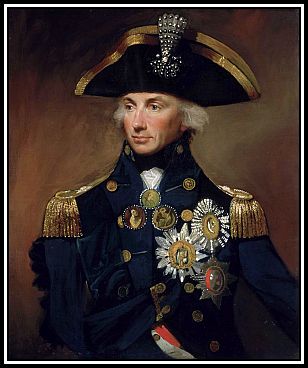 Vice Admiral Horatio Nelson, 1st Viscount Nelson, 1st Duke of Bronté (1758-1805)
Vice Admiral Horatio Nelson, 1st Viscount Nelson, 1st Duke of Bronté (1758-1805)
Trafalgar Square came into being, as we know it, in 1830, and was named for the Battle of Trafalgar which took place on 21st October, 1805 in the Atlantic Ocean just off Cape Trafalgar on the South West coast of Spain. The Battle saw the Royal Navy pitted against the combined fleets of the French and Spanish Navies during the Napoleonic Wars (1796-1815).
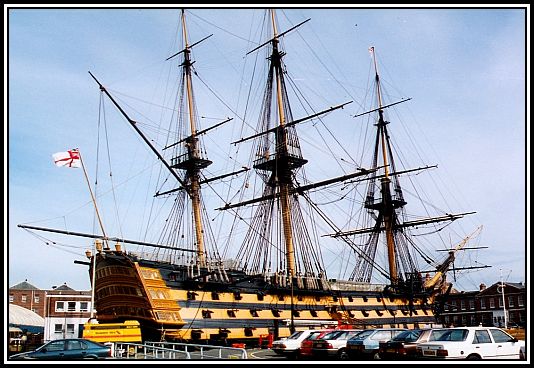 HMS Victory in Dry Dock at Portsmouth
HMS Victory in Dry Dock at Portsmouth
Admiral Lord Nelson aboard HMS Victory commanded the British Navy and won a decisive victory, but lost his life in doing so. As a memorial to him, the Square along with the column was built to commemorate Britain’s greatest Navel Hero.
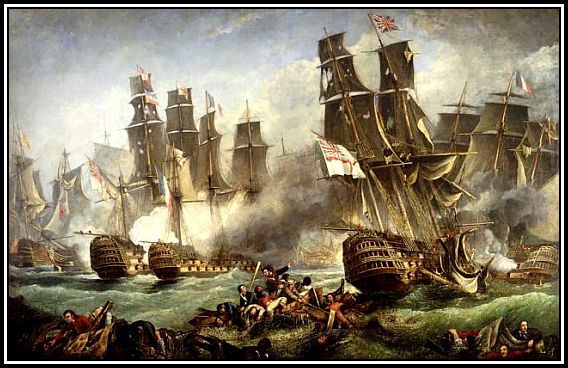 Painting depicting the Battle of Trafalgar
Painting depicting the Battle of Trafalgar
-oOo-
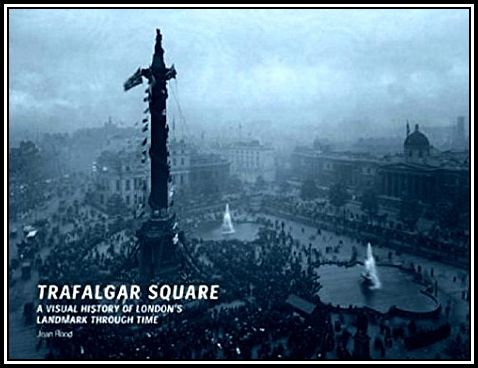
For a history of Trafalgar Square prior to 1900, please consider reading:
Trafalgar Square, A Visual History of
London’s Landmark through Time
By Jean Hood (published by Batsford, 2005)
 Jean Hood
Jean Hood
-oOo-
The first postcard appearing here is from 1905 and shows a derrick behind a large hoarding to the east of Nelson’s Column. Its presence is most likely from the tunneling during the construction of The Bakerloo & Bakerloo Underground Line (later to be known at The Bakerloo Line), which was to run from Baker Street to Waterloo Station.
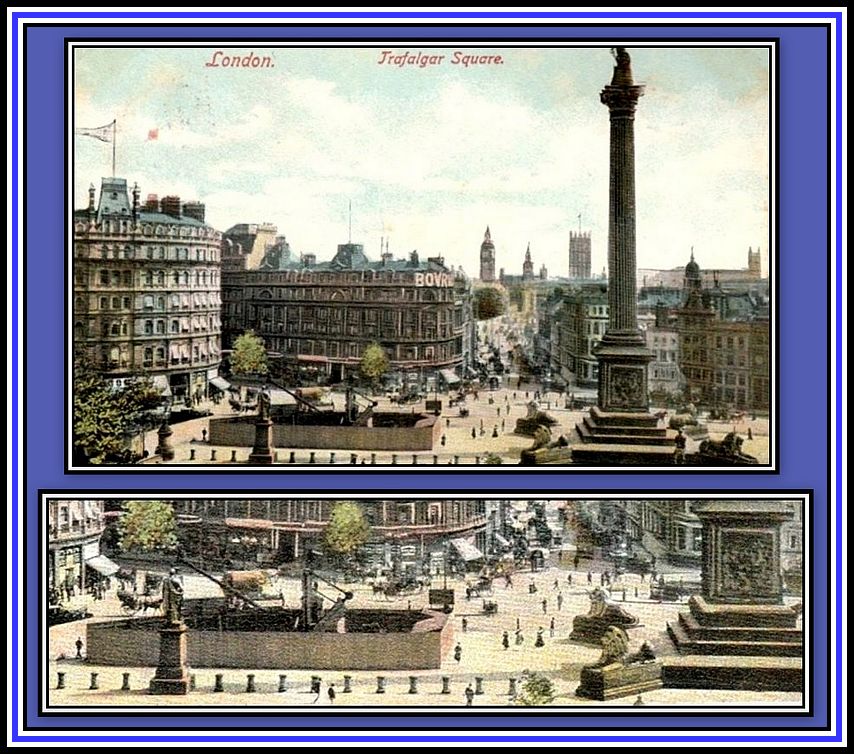 (Top) Postcard of Trafalgar Square from 1905
(Top) Postcard of Trafalgar Square from 1905
(Bottom) Enlargement showing the Derrick involved in the construction work on
The Bakerloo & Waterloo Line and Trafalgar Square Underground Station
-oOo-
The Bakerloo & Waterloo Line was the idea of James Whitaker Wright (1846-1904), an Englishman who made his name and fortune, albeit dubiously, in the U.S.A. He amassed a fortune following promoting silver-mining; unfortunately none of his shareholders made any money.
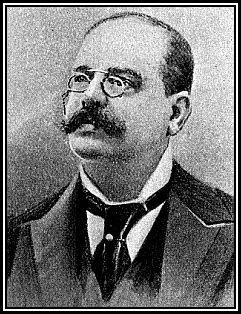 James Whitaker Wright
James Whitaker Wright
Mr. Wright returned to England where his swindling activities reach a peak in 1890 with the floating of a number of mining stock and bond options. His companies appeared solid since he choose his directors carefully from people of good standing. His downfall came with his attempt to float a bond to support the building of The Baker Street & Waterloo Line, although he was neither a mining nor construction/railway engineer. Investment proved poor and he was forced to finance the work from his own monies. This led to his financial empire falling into jeopardy. To support his investments, he began moving money from one of his companies to another under the guise of loans. It was with his announcement that no dividends would be paid despite claiming his companies solvent that caused investors to become suspicious. In late 1900, his companies collapsed leading to his fleeing London. However, he was apprehended and returned to stand trial. Meanwhile, investors of the London Stock Exchange went into panic mode.
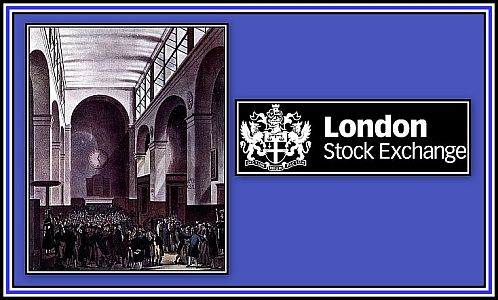 The London Stock Exchange in Victorian Times
The London Stock Exchange in Victorian Times
Mr. Wright was convicted of fraud in 1904 and sentenced to a seven-year term in prison. After learning his punishment, he committed suicide by taking a dose of cyanide in an anteroom of the Royal Courts of Justice where he was being held.
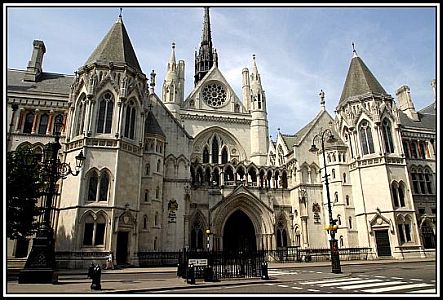 Royal Courts of Justice, Strand
Royal Courts of Justice, Strand
-oOo-
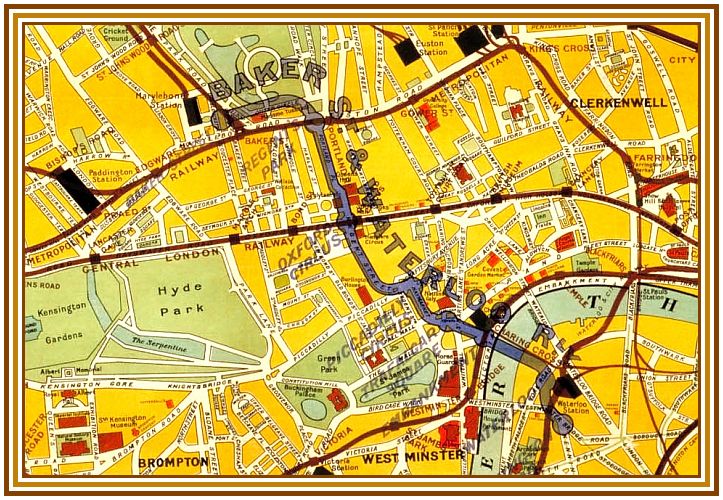 Map of The Baker Street & Waterloo Line from 1905
Map of The Baker Street & Waterloo Line from 1905
Reproduced from Mapping London
Work began on the construction of The Baker Street & Waterloo Line in 1898 by Mr. Wright and was completed by the American financier, Charles Yerkes (1837-1905) who built much of the other Underground lines. The Line itself was constructed by The Underground Electric Railways Company of London Limited and ran between Baker Street and Lambeth North Stations (called Kennington Road at the time) on the 10th March, 1906 and was extended to the Elephant & Castle Station on the 5th August, 1906. The public quickly took to calling it The Bakerloo Line and this became the official name in July 1906.
Trafalgar Square Underground Station was on the north side of The Strand beside Morley’s Hotel and Charing Cross Post Office. In 1922, Morley’s Hotel was demolished and South Africa House was constructed.
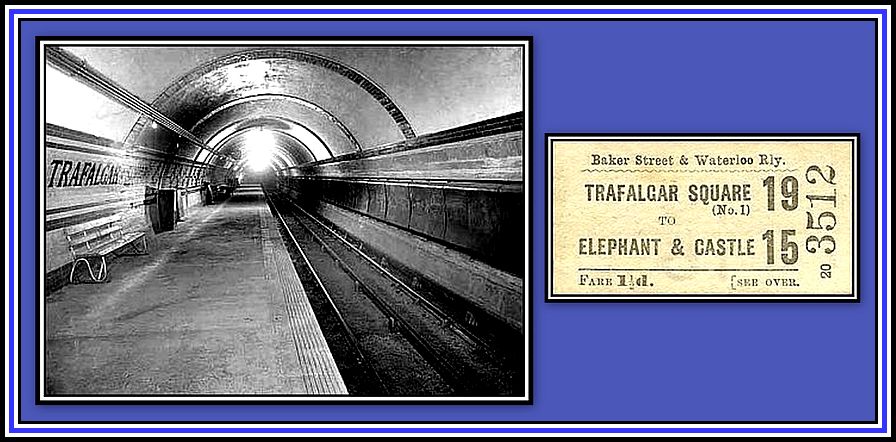 (Left) Platform of Trafalgar Square Station; (Right) Ticket
(Left) Platform of Trafalgar Square Station; (Right) Ticket
Trafalgar Square Underground Station was closed in September 1938 since it was in need of structural work. In preparation for possible war, the entrance to the tunnel where The Line crossed under the River Thames was closed by means of a concrete block. However, the block was removed prior to The Station reopening just a month later. The Station was used as a shelter during the Second World War. Unfortunately it was hit by a bomb in November 1940 that severely damaged the Booking Hall and brought about the death of seven people sheltering there.
-oOo-
On the 1st May,1979, following the construction of The Jubilee Line, Trafalgar Square Underground Station was renamed when it became part of Charing Cross Underground Station following the connection being made between the two stations.
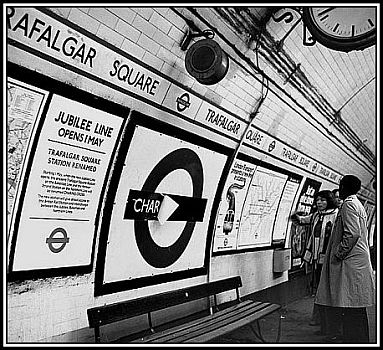 Platform of the Bakerloo Line at Trafalgar Square Underground Station
Platform of the Bakerloo Line at Trafalgar Square Underground Station
in 1979 just prior to when it was renamed Charing Cross Underground Station;
Photograph taken by Dr. Neil Clifton and reproduced from Subterranea Britannica
-oOo-
Since its completion, Trafalgar Square has been the site of many celebrations and demonstrations. A postcard of 1905 shows Nelson’s Column decorated by the Navy League (now known as The Marine Society & Sea Cadets) on the occasion of the Centenary of Admiral Lord Nelson’s death on the 21st October.
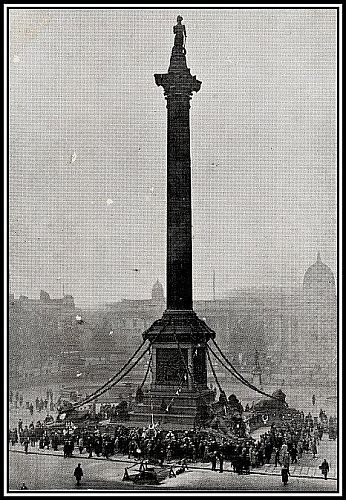 Nelson’s Column decorated on the Centenary of Lord Nelson’s death
Nelson’s Column decorated on the Centenary of Lord Nelson’s death
——oooOOOooo——
——oooOOOooo——
Click here to RETURN to TRAFALGAR SQUARE
——oooOOOooo——
Click here to RETURN to the POSTCARDS FROM OLD LONDON Home Page
——oooOOOooo——
Click here to GO to the AN ADDITIONAL SET OF POSTCARDS OF OLD LONDON
——oooOOOooo——
Click here to RETURN to the TABLE OF CONTENTS
-oOo-
Readers can TWEET their LIKES & DISLIKES to me at
or
make comments on the Website’s FACEBOOK PAGE
or
consider leaving a Comment at the end of each tale.
——oooOOOooo——

